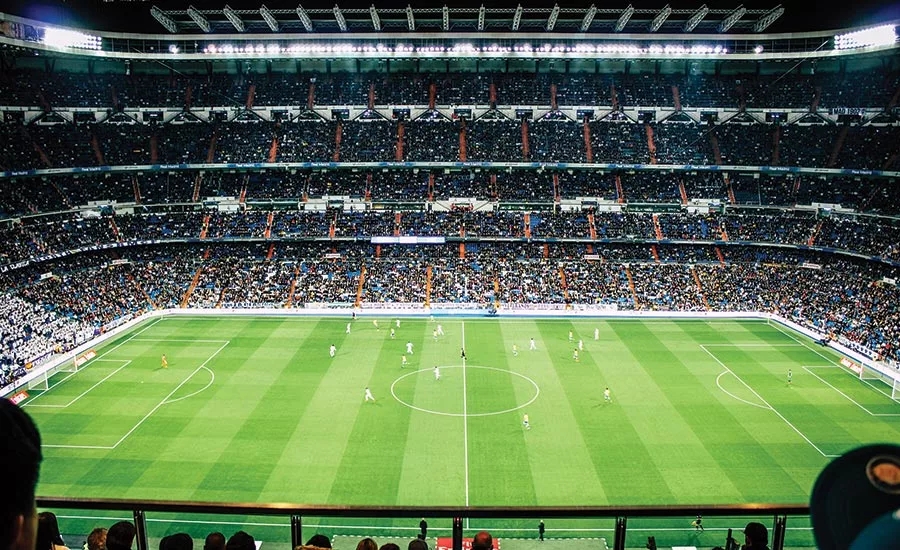How Large-Scale Events Need Special Security

Planning and coordination are key. For the 2019 Super Bowl in Minneapolis, Homeland Security Investigations (HSI), the Minneapolis Police Department and the FBI coordinated technology and equipment usage with other assets: bomb-sniffing dogs, assigned agents, federal law enforcement and others, to deploy what the FBI calls the largest deployment of federal assets to any Super Bowl ever.

“Whether privacy concerns prohibit the use of facial recognition software, or having subjects followed on foot or the physical size and topography of the venue, create significant challenges, or a concert stage uses strobe lights that make nearby security video cameras all but useless, a variety of factors can come into play when determining how to effectively and economically conduct surveillance,” says Sean Horner of The Chertoff Group.

Big events – from the Super Bowl to the World Olympics or World Cup soccer – require confidence by attendees that when they enter the event, they will leave safely and enjoy the venue they came to see.

There are a number of solutions out there for temporary events, such as sporting and special engagements including edge cameras, edge recording, cloud-based solutions and AI to name a few,” says Ken Mills, CTO at Dell EMC for the Surveillance and Reconnaissance business. “Almost every facet of traditional surveillance is available for temporary events. A trend that we are seeing is the move to the edge from the core/datacenter for video processing, recording and analyzing to enable faster time to result.”
Photo courtesy of Ken Mills
In January of 2019, the Clemson Tigers and Alabama Crimson Tide competed at one of the largest sporting events in the country: The National Collegiate Athletic Association’s (NCAA) fifth National Championship game of the College Football Playoffs. There were 75,000 fans in attendance.
Events like these are vulnerable to a host of security risks. In fact, the event was monitored by students from Norwich University’s Applied Research Institute (NUARI) who used artificial intelligence decision automation software (Norwich used Respond Software) to monitor, analyze and resolve more than 243,000 events and threats during the game. There were 200,097 threats that required deeper investigation; the team diagnosed 431 as malicious and mitigated 13 events that specifically targeted the stadium. The game seamlessly took place without trouble.
Events like this are ripe targets for physical and cyber threats. Thankfully, the growth of advanced technology, coordinated with security teams, is being used to control and mitigate event security risks that could otherwise result in devastating consequences.
“The advantage of having a protective security advance team aids with protecting fans, employees, and individuals attending special events from visiting a potentially dangerous venue,” says D’Nasha Harrison, CEO of Harrison Security Facilitators.
“Coordinating security needs prior to an event is paramount and with the aid of security cameras, along with personnel conducting a protective security advance survey, boundaries and surrounding areas within and outside of the venue, can receive the proper attention that it needs. Security personnel can be assigned to survey various routes leading to and coming from the venue. A search of surrounding structures adjacent to the venue can also be conducted, ensuring that the area surrounding the event does not pose any threats during the duration for the scheduled event.”
New and advanced technologies instill event security by performing in ways and in places that human beings cannot.
Coordinated Advanced Technology
“There are a number of solutions out there for temporary events, such as sporting and special engagements including edge cameras, edge recording, cloud-based solutions and AI to name a few,” says Ken Mills, CTO at Dell EMC for the Surveillance and Reconnaissance business. “Almost every facet of traditional surveillance is available for temporary events. A trend that we are seeing is the move to the edge from the core/datacenter for video processing, recording and analyzing to enable faster time to result. Because of this, customers want more power and choices at the edge. This is especially true for temporary events where clouds and datacenters are not always readily available. These solutions are needed to ensure the safety of patrons of these events and police agencies the ability to respond quickly to any security issues.”
For a large-scale temporary event, the best security is achieved when technology is clearly and consicely coordinated with other technology and security professionals.
“The basics for this kind of [temporary] event involve establishing an outer perimeter with physical security equipment (barriers, access control), an inner perimeter that includes credentialing and metal detectors and other sensors, installing video surveillance equipment and related technologies such as facial recognition and motion detection, as well as video analytics to detect suspicious movement and objects,” says David Lim a product line manager with Montreal, Canada-based security technology consultant Genetec, Inc. “In order to bring all of these resources together, a communications protocol and response plan for security staff is also necessary.”
Lim says that a communications or command center is key to orchestrating operations during the event. Basics such as establishing a radio communications channel are just as important as ensuring a response protocol for expected as well as unexpected incidents.
“For the former, instructions for invalid access passes are a common example, while the latter includes a response plan for anything identified during the initial risk assessment, such as an intrusion or even a fire [or] explosion, or even a physical altercation,” says Lim. “Who is dispatched? How do they react? And when should they engage first responders? These are some of the questions that must be answered prior the event.”
Planning and coordination are key. For the 2019 Super Bowl in Minneapolis, Homeland Security Investigations (HSI), the Minneapolis Police Department and the FBI coordinated technology and equipment usage with other assets: bomb-sniffing dogs, assigned agents, federal law enforcement and others, to deploy what the FBI calls the largest deployment of federal assets to any Super Bowl ever.
The Camera View
Large-scale events like the Super Bowl rely on vigilance. There are many people, in many places. But human beings can’t be everywhere at all times. Monitoring with security cameras and camera technology are effective tools to supplement surveillance from humans.
For the last 10 years, Lim explains, the use of video surveillance has grown at an exponential rate, largely due to their cost-effectiveness and available features that are now standard with IP-surveillance technologies.
Back in 2004, it was widely noted that for the Athens Summer Olympics, more than 1,600 security video cameras were used, with security staff noting that it was more reassuring to monitor the event location andcore downtown areas, rather than listening for intermittent radio updates, says Lim. This was the beginning of the now universal recognition that video surveillance equipment is a must and the most crucial element to ensure both smooth operations and security. The same rule applies for temporary events, whether you are providing security for performers at the Super Bowl or arriving dignitaries at other special events.
Closed circuit TV and a network of cameras to support it may be networked with other technology such as face recognition software to provide centralized controlled. But the deployment or camera technology must consider the environment of the event, and the effectiveness of cameras in that environment. Will they function effectively? Are there privacy concerns?
“Whether privacy concerns prohibit the use of facial recognition software, or having subjects followed on foot or the physical size and topography of the venue, create significant challenges, or a concert stage uses strobe lights that make nearby security video cameras all but useless, a variety of factors can come into play when determining how to effectively and economically conduct surveillance,” says Sean Horner of The Chertoff Group, a global security advisory firm. “Identifying what advantages may be gained by utilizing existing security equipment to conduct surveillance, specifically systems such as CCTV, is also a crucial step in determining where to deploy limited resources. Even if the venue itself doesn’t have existing equipment, it is very possible a neighboring facility may have capabilities available to survey a specific area of the venue.”
Boots on the Ground
Event security requires the right mix of technology, but it also requires people. When technology connects with security teams and other dispersed security workers, surveillance limits expand greatly.
As Horner explains, there are dozens of technological options available, temporary or permanent: video surveillance cameras mounted on telescoping security towers monitored by a person onsite; AI powered algorithms or video analytic software integrated with security video cameras mounted on a mobile security robot – monitored and controlled remotely; other technology that can detect unwanted objects, faces, body heat and intrusion across specific boundaries. In addition to video surveillance, other technology such as passive ferromagnetic detection equipment (a form of surveillance that may be necessary to detect prohibited items carried by potential bad actors) is useful and improves overall security detection and incident prevention.
“Depending on what or who is being surveilled and where, technology may not always be the right answer,” says Horner. “In some cases, effective surveillance means boots on the ground that can physically follow a subject and observe [and] report their activities.”
Looking for a reprint of this article?
From high-res PDFs to custom plaques, order your copy today!







